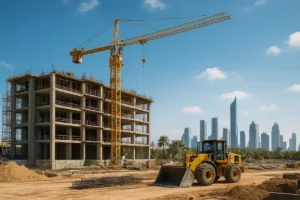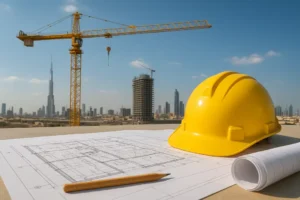Modern Construction Technology in Saudi Arabia
In today’s rapidly evolving construction landscape in Saudi Arabia, technology plays a pivotal role in transforming the way buildings and infrastructure are planned, designed, constructed and maintained. From the capital of Riyadh to emerging smart-cities across the Kingdom, the integration of advanced tools such as Building Information Modeling (BIM) and digital site-management platforms is reshaping the construction sector. In this article, we will explore how technology is being applied in modern construction in Saudi Arabia—especially in Riyadh—what benefits it brings, what challenges remain, and how firms and stakeholders can harness digital tools for better results.
What is BIM and Why is It Important in Construction in Saudi Arabia?
Understanding BIM
Building Information Modeling (BIM) is a digital representation of the physical and functional characteristics of a facility. It goes beyond traditional 2D drawings by enabling 3D modelling, data integration (4D time, 5D cost), clash detection, and lifecycle management.
BIM in the Context of Saudi Arabia
In Saudi Arabia, the construction market is undergoing rapid change. The BIM market is being driven by major infrastructure programmes and government mandates. For example:
-
The BIM market in Saudi Arabia is expected to grow significantly, with key cities like Riyadh leading adoption.
-
In 2023, a “National Building Information Modeling (BIM) Strategy” for Saudi Arabia was reported, making BIM more of a standard in public-sector construction.
-
BIM adoption aids in achieving goals of Saudi Vision 2030 by enabling more efficient, sustainable, digital construction in the Kingdom.
Why BIM matters for construction in Saudi Arabia
The use of BIM in the Saudi construction industry delivers key benefits:
-
Enhanced collaboration between architects, engineers and contractors.
-
Reduced errors and rework through clash detection and better planning.
-
Improved cost- and time-efficiency in projects.
-
Improved sustainability and lifecycle management of assets.
Given these advantages, BIM becomes a cornerstone of modern construction practices in Riyadh and broader Saudi Arabia.
Digital Tools Beyond BIM: What Technologies Are Shaping Construction in Riyadh?
While BIM stands out as a foundational technology, the modern construction environment in Saudi Arabia is embracing a suite of digital tools:
1. Drones and Site Monitoring
High-resolution aerial imagery and sensor data from drones allow construction managers to track progress, inspect hazards, and monitor site safety.
2. Digital Twins and IoT
Creating a digital twin—a virtual replica of the physical construction or built asset—allows real-time monitoring of building performance. In Saudi Arabia, examples include integrating BIM with IoT sensors for monitoring energy use, occupancy, and maintenance.
3. 4D/5D Scheduling and Cost Tools
By integrating scheduling (4D) and cost estimation (5D) into BIM models, construction in Saudi Arabia can more accurately forecast timelines and budgets.
4. Augmented/Virtual Reality (AR/VR)
To improve communication among stakeholders and to visualise complex designs in Riyadh’s construction sector, VR/AR tools tied to BIM models are increasingly applied.
5. Prefabrication and Modular Construction
Digital tools combined with BIM enable off-site prefabrication and modular construction, reducing waste and improving speed. Saudi Arabia’s construction market is poised to adopt these methods.
In sum, the modern construction sector in Riyadh and across Saudi Arabia is integrating a technology stack—not just BIM, but a broader ecosystem of digital tools that improve productivity, quality and sustainability.
Technology and Saudi Arabia’s Vision 2030
Construction in Saudi Arabia is central to the Vision 2030 agenda, which emphasises diversification, infrastructure, and digital transformation. Technology adoption (BIM and beyond) supports that agenda by enabling smarter, more sustainable construction.
Construction Sector Benefits in Saudi Arabia
With modern construction techniques and technology, Riyadh’s construction industry sees:
-
Improved collaboration between stakeholders, fewer delays.
-
Cost savings via early detection of design issues and better material planning.
-
Enhanced sustainability: buildings designed and managed for energy efficiency and lifecycle performance.
-
Better resource allocation in large-scale infrastructure projects.
Pros and Cons of Using Technology in Construction in Saudi Arabia
Pros
-
Efficiency Gains: Reduced construction time and fewer errors thanks to digital planning and BIM.
-
Cost Savings: Less rework, optimized materials, better scheduling.
-
Quality & Transparency: Better visualisation, stakeholder alignment, data-driven decisions.
-
Sustainability: Digital models support energy modelling, smarter maintenance, lifecycle thinking.
-
Global Competitiveness: By embracing modern methods, Saudi Arabia’s construction firms become more competitive internationally.
Cons / Challenges
-
Skill Gaps: A significant shortage of trained professionals skilled in BIM and digital tools in Saudi Arabia.
-
Resistance to Change: Traditional workflows and reluctance to adopt new tech can slow digital transformation.
-
Cost of Implementation: Up-front investment in training, software, hardware may deter smaller construction firms.
-
Standards & Regulations: Clear standards and mandates are required for digital construction; implementation varies.
-
Integration Complexity: Aligning BIM, IoT, digital twins and data systems across project stakeholders can be complex.
Despite the challenges, the momentum in Saudi Arabia’s construction industry—especially in Riyadh—is clearly toward greater adoption of technology.
Conclusion
The role of technology in modern construction in Saudi Arabia cannot be overstated. In Riyadh’s dynamic building and infrastructure environment, tools such as BIM, digital twins, drones, AR/VR and integrated scheduling are reshaping how construction is planned, executed and managed. For construction in Saudi Arabia, these technologies deliver efficiency, cost-effectiveness, sustainability and collaboration—key imperatives under Vision 2030. Though challenges remain—such as skills, cost and integration—the trajectory is clear: the future of construction in the Kingdom is digital. Whether you’re part of an architectural firm, contractor, project owner or facility manager in Riyadh, embracing these technologies will be fundamental for success. Now is the time to act and leverage digital tools to elevate construction in Saudi Arabia to new levels of performance.



